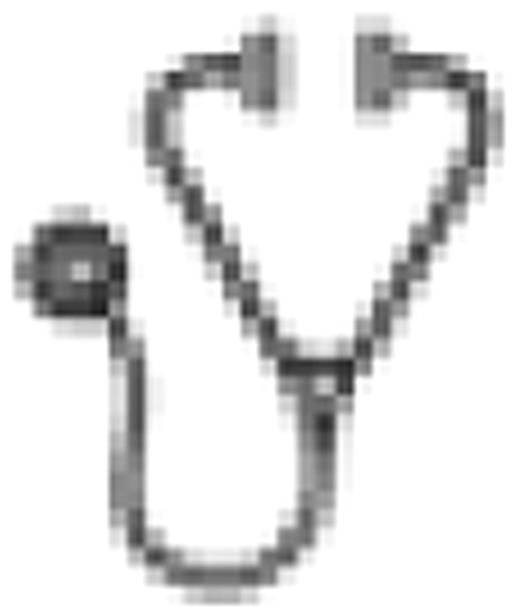Abstract
Poster Board II-605
The human gene BAALC (Brain And Acute Leukemia, Cytoplasmic) is a molecular marker of immature hematopoietic cells. In normal hematopoiesis, BAALC is highly expressed in CD34 positive progenitors and down-regulated with cell differentiation. Moreover, high mRNA expression levels of BAALC have shown to be an adverse risk factor and were associated with chemotherapy resistance in adult patients with cytogenetically normal acute myeloid leukemia (CN-AML) and acute T-lymphoblastic leukemia (T-ALL). While the prognostic value of BAALC expression has been validated, the function of BAALC in leukemia remains unknown. The aim of this study was to identify genes correlated with BAALC to gain further insights into the underlying pathways of the BAALC-associated chemotherapy resistant leukemic phenotype. Therefore, we generated gene expression profiles (GEP) using pre-treatment T-ALL samples (n=86) that differentiated high versus low BAALC expressers (HG-U133 Plus 2.0, Affymetrix). Samples were divided into quartiles (Q1-Q4) according to BAALC expression and QB1-3 was defined as low BAALC and QB4 as high BAALC. Differentially expressed genes between QB1–3 and QB4 were defined by a minimum expression change of three-fold (P'0.05). In order to identify BAALC-associated genes common to T-ALL, CN-AML and normal hematopoiesis we compared these BAALC-derived GEP in T-ALL with BAALC-associated profiles of CN-AML (Langer C et al, Blood 2008) and of normal CD34 positive progenitors (Komor et al, Stem Cells 2005). Only four genes (CD34, CD133, NPR3, IGFBP7) were common to the BAALC-associated GEP of all three entities (T-ALL, CN-AML, and CD34 positive progenitors). Of these genes, the human gene Insulin-like Growth Factor Binding Protein 7 (IGFBP7) was further investigated as the Insulin-like growth factor signaling plays an important role in various human cancers. Next we determined IGFBP7 expression levels by real-time RT-PCR in an independent cohort of 219 adults with newly diagnosed T-ALL, registered within the German Multicenter Acute Lymphoblastic Leukemia Study 06/99 and 07/03 protocols. In T-ALL samples, IGFBP7 showed a heterogeneous expression pattern compared to normal bone marrow (expression range: 0–79.1 vs 0.6–2.3). For correlation of IGFBP7 expression with clinical and molecular features, samples were divided into quartile groups according to IGFBP7 expression and defined as low IGFBP7 with expression levels in QI1 to QI3 (n=158) and as high IGFBP7 with expression levels in QI4 (n=53). High expression levels of IGFBP7 were associated with an immature phenotype of early T-ALL (62% of patients in QI4 showed an early T-ALL immunophenotype as compared to only 15% in QI1–3; P<0.001), high cell surface expression of CD34 (mean: 36% vs 15%; P<0.001) and CD33 (mean: 24% vs 3%; P<0.001). Moreover, high IGFBP7 expression significantly predicted a higher frequency of refractory disease (11% vs 3%; P=0.03) and an inferior overall survival (OS; 4-year OS: IGFBP7 QI4: 42% vs IGFBP7 QI1–3: 55%; P=0.03). In vitro, studies revealed that treatment with rIGFBP7 significantly inhibited proliferation of KG1a leukemic cells (65% reduction of proliferation compared to untreated cells; P<0.001) determined by Cell Proliferation Reagent WST-1. Moreover, a 26% reduction (P<0.001) of the DNA synthesis phase was detected by BrdU incorporation after rIGFBP7 treatment of KG1a cells. Taken together, we identified IGFBP7 as a lineage-independent, BAALC co-expressed gene involved in leukemia. High IGFBP7 expression was associated with stem cell features and treatment failure in T-ALL. In contrast to BAALC which likely represents only a surrogate marker of treatment failure in acute leukemias, IGFBP7 might play functional role and contribute to the molecular basis of BAALC-associated drug resistance. As rIGFBP7 inhibits proliferation of leukemic cells, secreted IGFBP7 protein may therefore promote resistance to cell cycle dependent cytostatic drugs targeting highly proliferate blast cells.
Haferlach:MLL Munich Leukemia Laboratory: Equity Ownership.

This icon denotes an abstract that is clinically relevant.
Author notes
Asterisk with author names denotes non-ASH members.

